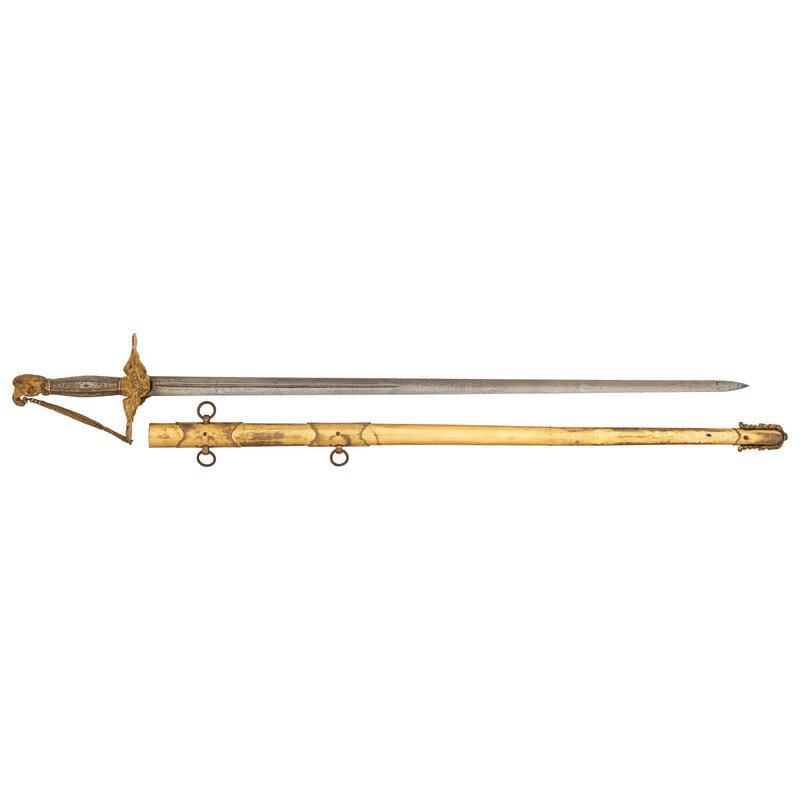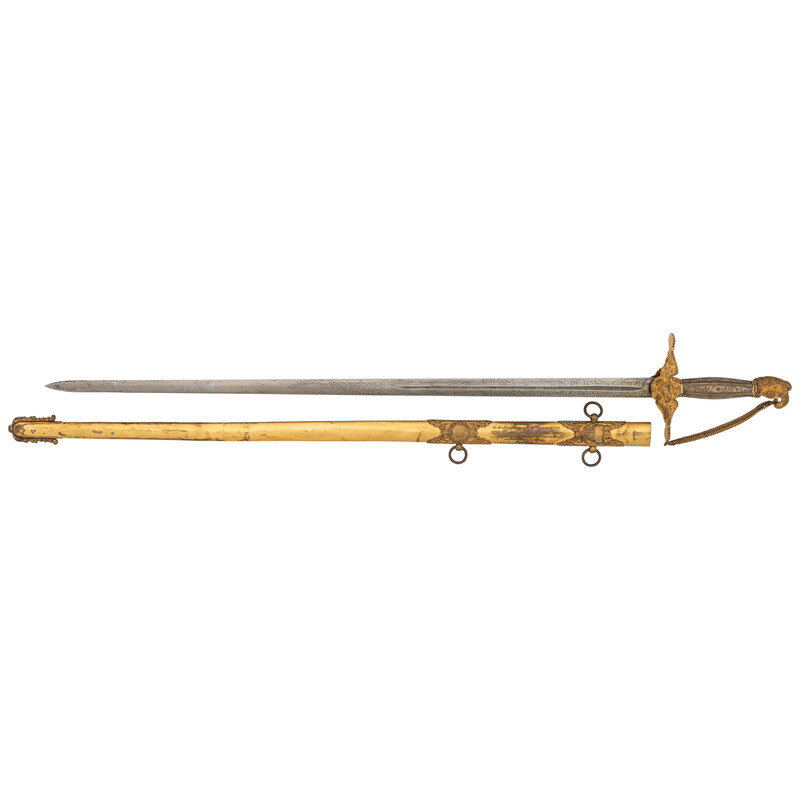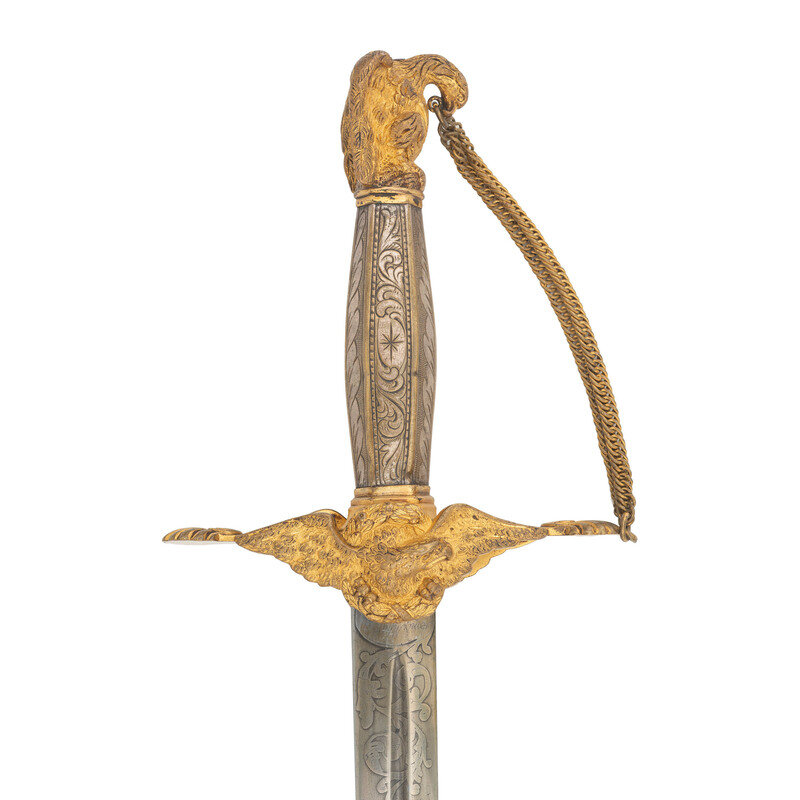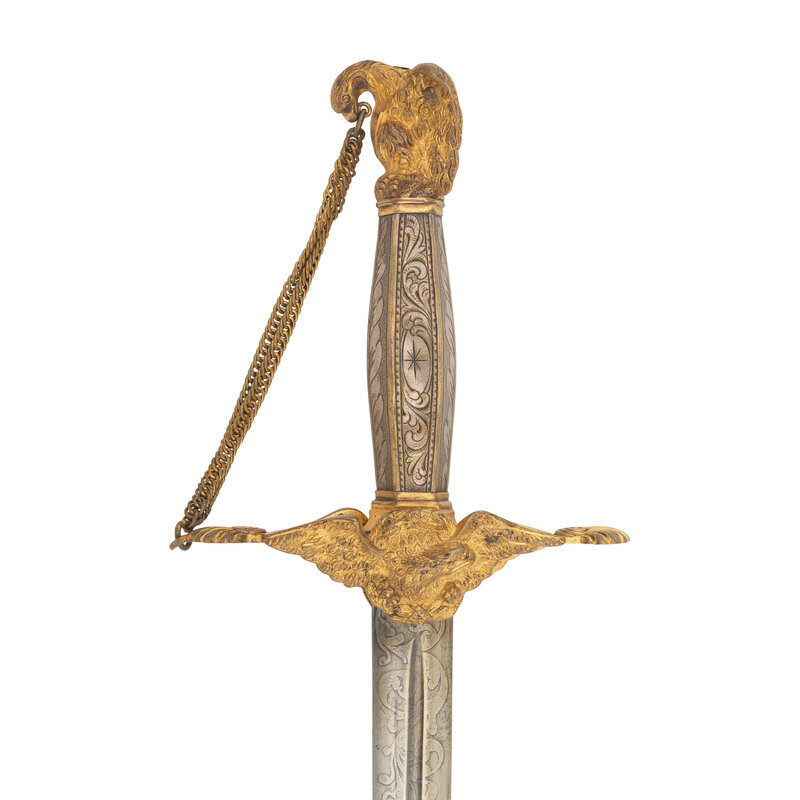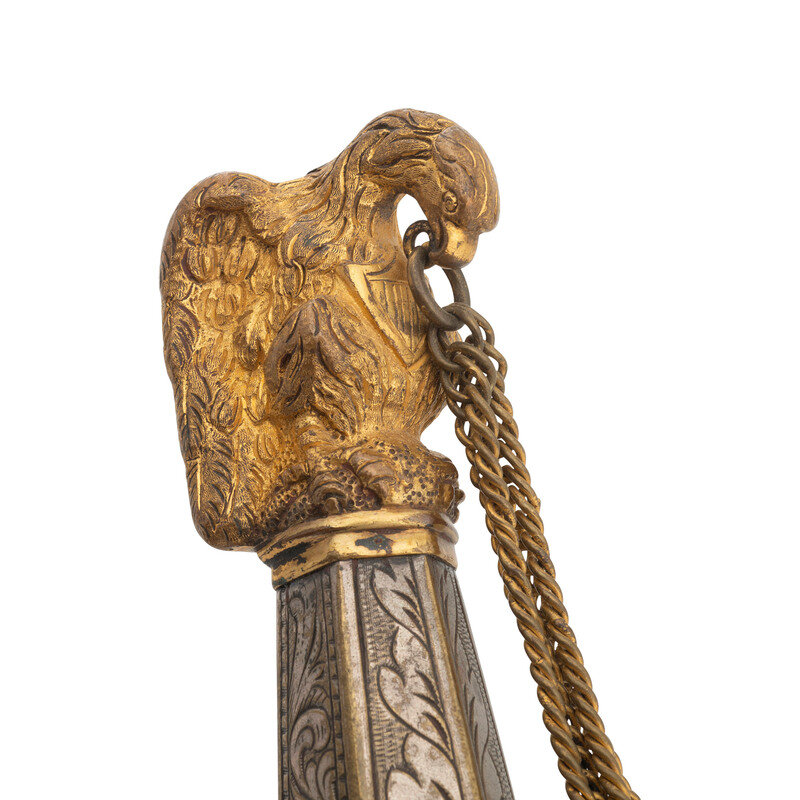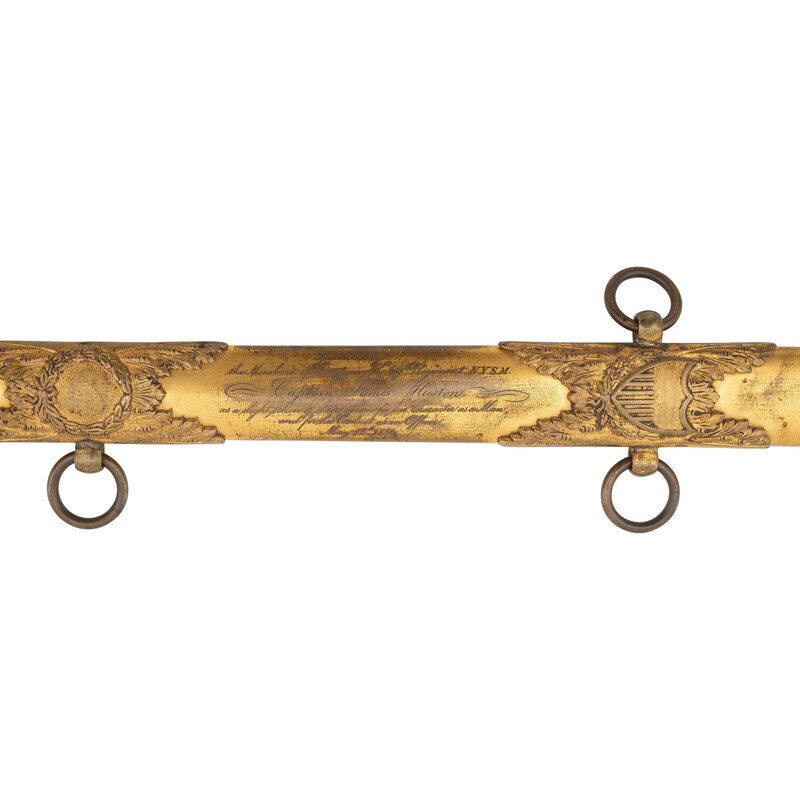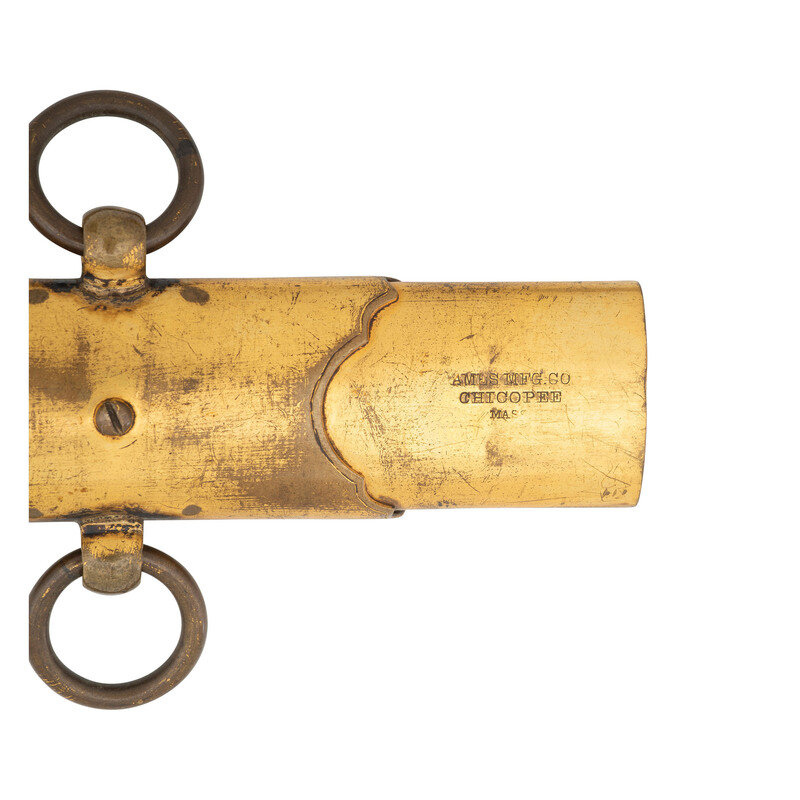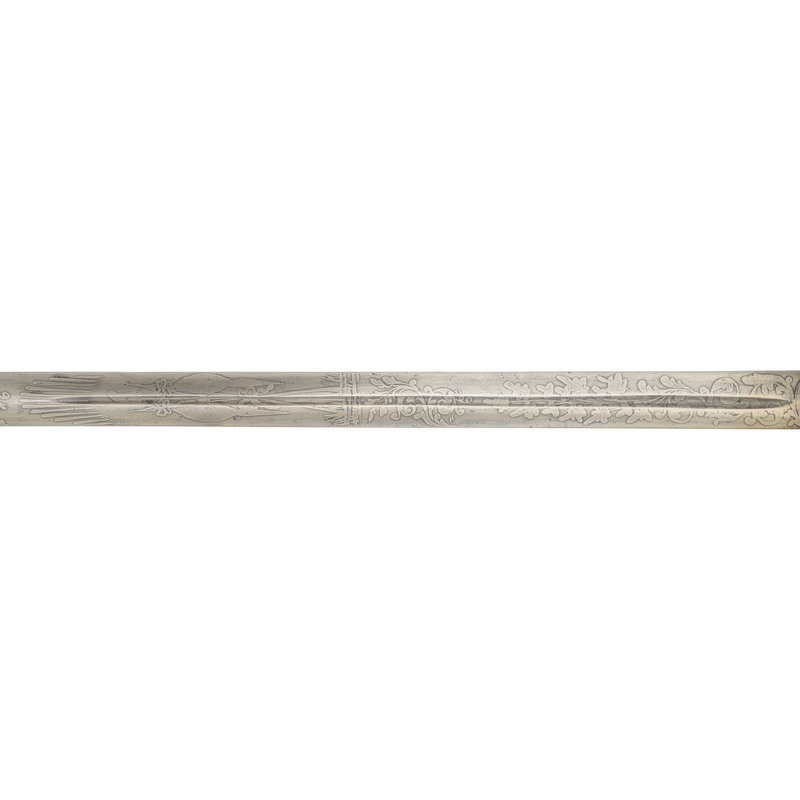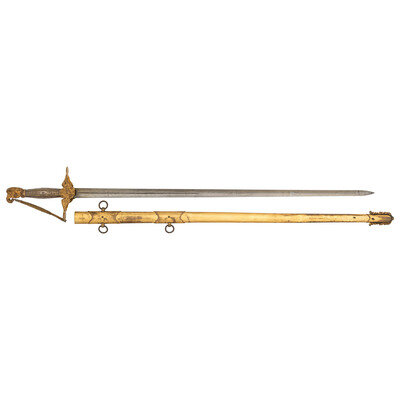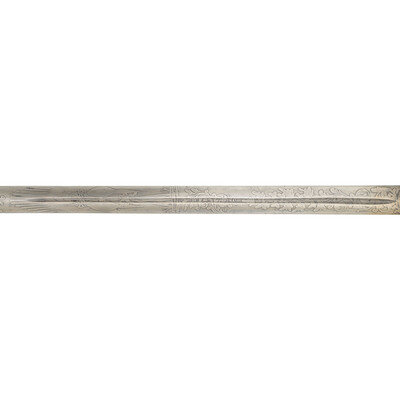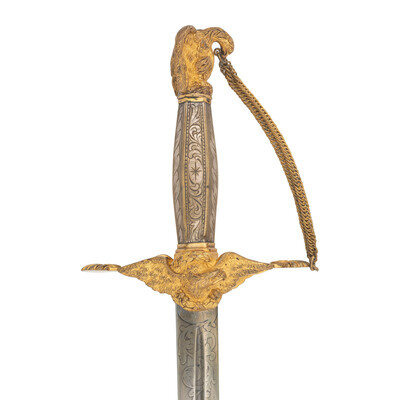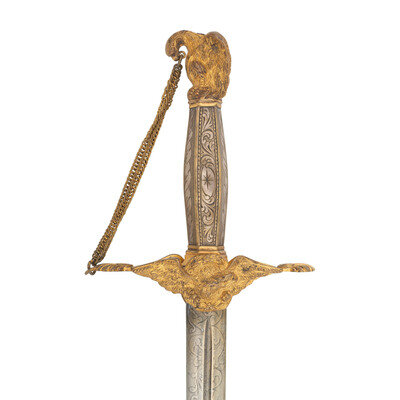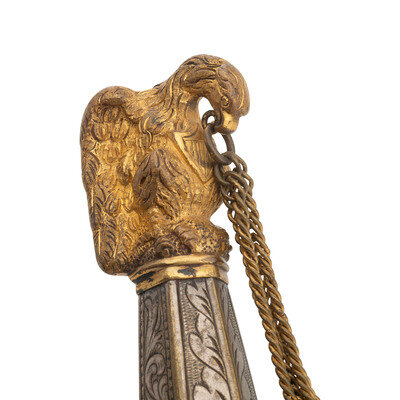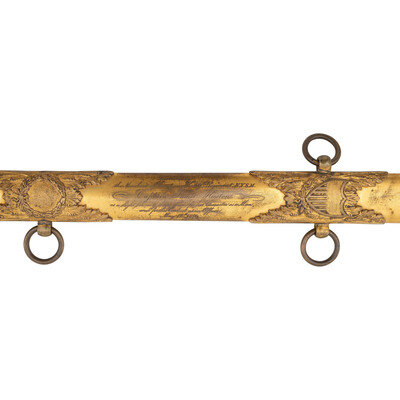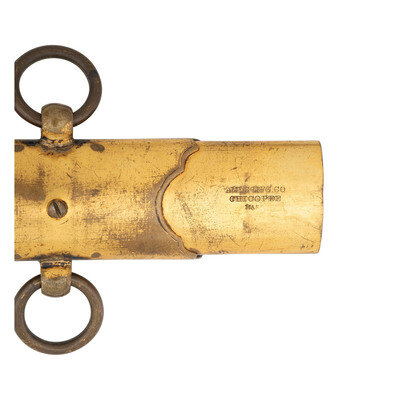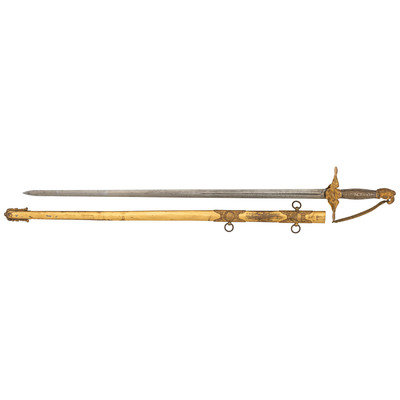Condition Report
Contact Information
Auction Specialist
Lot 30
Lot Description
31" double edged spear point blade, 1" wide at ricasso with narrow 12.5" long central fuller. 37" in overall length with a 6" cast gilt deep relief brass hilt with engraved silver grip. Pommel cap in the form of an eagle with two guard chains suspended from its beak. 5.5" gilt brass cross guard in the form of a spread-winged eagle with deep relief and chiseled embellishments, with broad langets formed by the talons and laurels and the quillons in the forms of shells. The reverse is dry needle etched in three lines at the ricasso Ames Mfg Co/Chicopee/Mass with the etching mostly concealed by the langet. Blade with 18" etched panels showing foliate patterns, patriotic and martial themes. The obverse features a trophy of arms and a spread-winged American Eagle and the reverse shows another trophy of arms. Hexagonal silver grip is engraved with foliate and geometric themes. The sword is accompanied by its gilt brass scabbard with highly detailed deep relief brass mounts in the form of the Shield of Columbia for the upper mount with dual suspension rings, and a laurel and oak leaf panel for the single ring central mount. The reverse of the scabbard is marked near the throat: AMES MFG CO/CHICOPEE/MASS. The obverse of the scabbard is engraved between the mounts: Presented by/the Members of Company K 69th Regiment N.Y.S.M/to Captain James Huston/as a slight token of their esteem for his Character as a Man/and for his conduct as an officer/May 12th, 1856.
James Francis Xavier Huston (1818-1863) was born in Ireland on January 7, 1818 and emigrated to America in 1848, arriving via the ship Louisiana in New York City of September 27. He was listed as a clerk in his arrival documents and he made his passage in steerage. A strong advocate for Irish Nationalism, he had emigrated to the United States after the suspension of Habeas Corpus in Ireland, which resulted in the hunting down of nationalist agitators. Huston had been training nationalist men in various military skills and so he was certainly the type of person that was being hunted by the authorities. In New York he soon joined the New York State Militia and was instrumental in the formation of the 69th NY State Militia. Many of the men of the regiment were members of the "Silent Friends" a secret society of Irish nationalism supporters. Huston was made the captain of Company K and this sword was a token of esteem and respect from his men. Period newspaper accounts discuss the presentation of the sword, along with a pair of epaulette to Huston.
With the outbreak of the American Civil War, Huston joined the newly forming 82nd New York Infantry on April 18, 1861 and was mustered into service as the captain of Company E on May 21. The 82nd New York was assigned to what would become the Army of the Potomac and spent the entire war fighting with the primary Union Army in the east. Their first engagement was at First Manassas. In 1862 they fought during the Peninsula Campaign, the Seven Days, at Antietam and Fredericksburg. At Antietam the regiment engaged 339 men and suffered 128 casualties. In May of 1862 Huston was promoted to lieutenant colonel of the regiment. In 1863 the regiment fought at Chancellorsville and soon after Huston was promoted to colonel and command on the regiment, effective May 20, 1863. The regiment fought at Gettysburg as part of Hancock's Corps and on July 2nd was dispatched from their position on Cemetery Hill to support Sickles line which had moved too far forward and exposed itself to flank attack.
During the vicious fighting the 82nd New York suffered 192 casualties out of 365 men engaged, with Huston among the dead. The regiment continued to fight with the Army of the Potomac through the balance of the war, seeing combat at some of the most intense engagements of the war including the Wilderness and Cold Harbor, ending the war with the Siege of Petersburg, where the regiment was mustered out of service on June 25, 1864.
The sword is accompanied by a large binder of research and information about Huston, including copies of newspaper articles, photos, service records, etc.
From the Collection of George Oldenbourg
